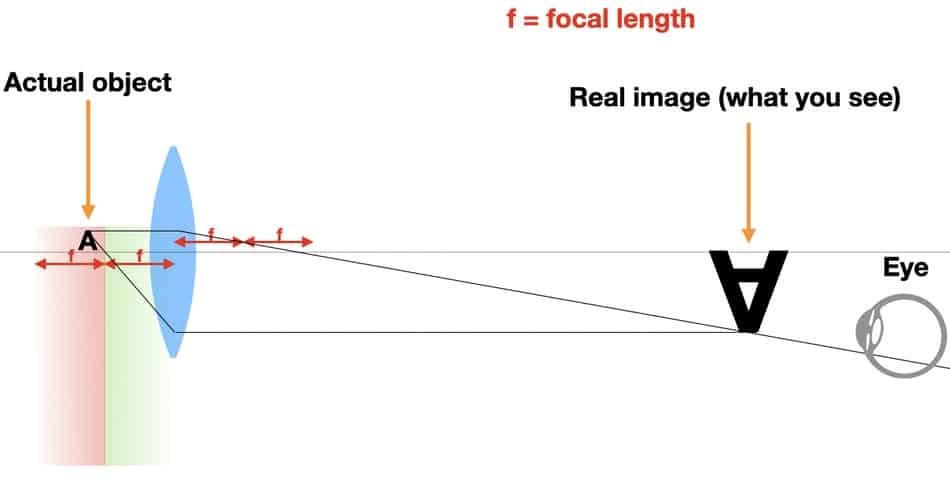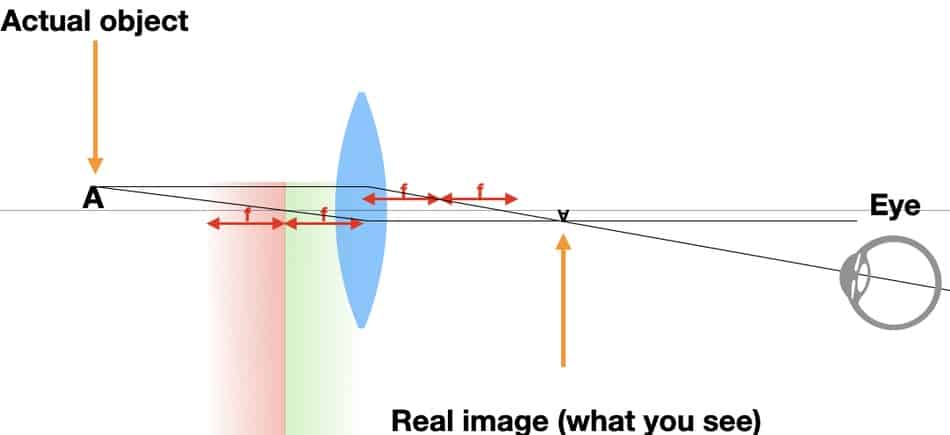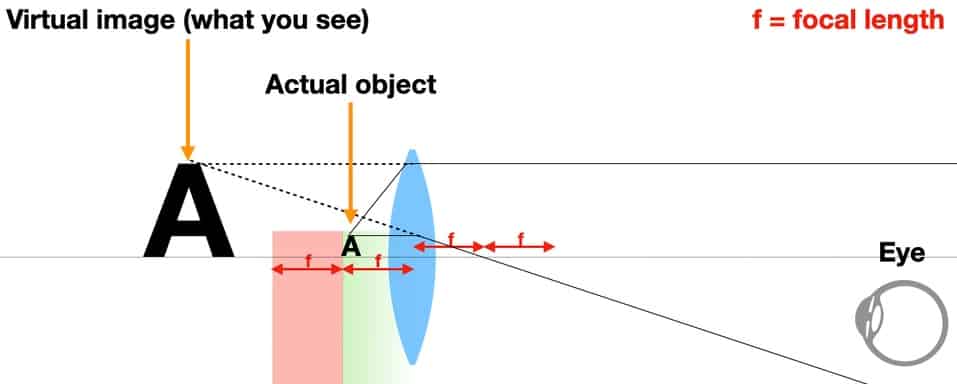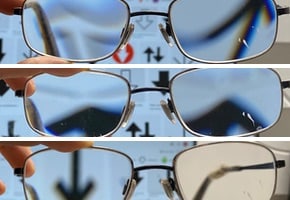In this article, you will learn about why magnifying glasses flip images and what it exactly takes to produce an inverted image. If you have a magnifier laying around you can replicate the results of the schematics below very easily.
Images will be flipped when the light is focused at a point beyond the lens focal length for the magnifying glasses. The more powerful the magnification is, the shorter the distance between the object and the magnifier has to be to produce an upside-down image.
In addition to the flipped or inverted image, you can observe the image getting smaller as you increase the distance from the object you want to look at. In the schematic below you can see where the object is positioned just a little further behind the focal length of the lens. In such a case you would have seen an inverted or flipped image that is magnified.

As the distance between the object is further increased past the focal length of the lens the image you can see stays flipped but the size of the image becomes smaller. In the schematics you can see the flipping point for the image to become inverted is in the transition zone between the red and green area.

As you decrease the distance between the object and the lens below the focal length of the lens the image will flip back. Now you can see it as usual upright.

Examples of Magnifiers Flipping Images

The object being viewed in the picture above is outside twice the focal length of the (collecting) lens. The result is therefore an inverted, side-swapped, smaller image. This can be seen by comparing it with the part of the text that can be read directly from the screen next to the lens.
The text directly from the screen becomes increasingly blurred because the image is created further and further away from the lens (and thus also from the screen) and at some point, the camera no longer captures the image and the object sharply; both are at too different a distance.
When the object gets positioned at double focal length of the magnifier the lens image you can see will be inverted, side-swapped image, and of the same size as the original image. This case was not captured with a photo in this article. But if you vary with the distance between the object and the magnifying glasses you can easily produce the described result.

The object being viewed above is located between the single and double focal length of the (plus) lens. The result is therefore an inverted, side-swapped magnified image. This can be recognized by comparing it with the part of the text that can be read directly from the screen next to the lens.

In the picture above you can see the object (the image of the arrow facing down). What you see is magnified a lit and the image is not flipped. In this case, the object being viewed is within the single focal length of the plus lens.
Please note how you perceive the image is influenced by both sides of the lens. This means when you vary the distance from the object the image you see may flip or not flip depending on lens power. On the other side, the observer and the distance to the lens also need to stay outside of double the focal length of the lens. When you hold the lens very close to your eye you will not see the image inverted.
Do Glasses Invert the Image?
Glasses also invert images. You just need a lens with two diopters of plus power or more. Hold the glasses with straight arms in front of you and look through them. Focus on an object beyond the lens focal length. Then you can see the image inverted.
When you decrease the distance between the object and the glasses below the focal point of the lens the image flips back in the upright position. The same is true if you decrease the distance between your eyes and the glasses.

You can try this yourself with a plus lens or glasses made to correct hyperopia. Hold it close to your eye and try to focus on a distant object and you’ll see the world slightly magnified. Now move the lens slowly away from your eye, and you’ll see the image magnify further as you increase the distance between your eyes and the glasses. Do this until there will be a point where it’s all a blur. Moving it further still, and you’ll see the image come back, inverted.
The higher the plus power of the lens the shorter the focal length and the faster you can see the glasses producing an inverted image. In the table below you can see focal lengths in combination with the diopters of the lenses.
When Do Lenses Flip Images?
To produce an inverted image with lenses you need two things. First, the object being looked at must emit light or it reflects light and the image could be made visible with a screen. Second, the distance of the object in front of the lens and the distance of the viewer behind the lens must be greater than the single focal length.
Examples of different focal lengths in connection with the respective diopter specifications can be found in the table below.
| +1D | 100cm |
| +2D | 50cm |
| +3D | 33cm |
| +4D | 25cm |
| +5D | 20cm |
| +6D | 16cm |
| +10D | 10cm |
With the help of the table, it was also explained why the effect of an inverted image can be observed less often with glasses compared to magnifying glasses. Magnifiers have much stronger lenses and the smaller focal length leads to a faster inversion of the observed image.
